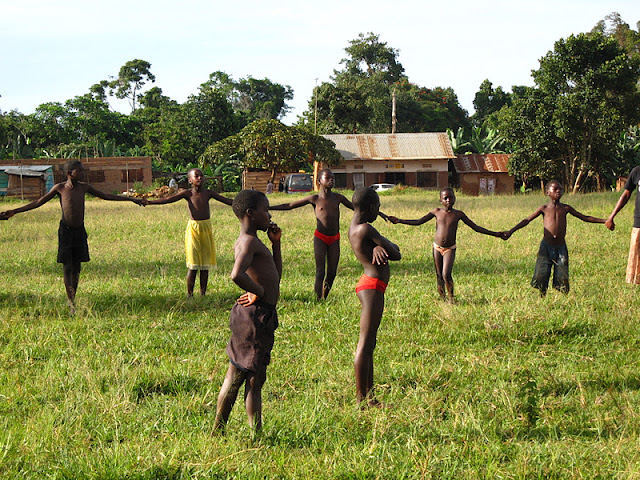Our time spent in Uganda was as incredibly meaningful as we could have ever hoped. We saw and experienced elements of life which were magical, inspiring and at times, ultimately shocking. Of all the experiences and stories we brought back this is the one that has remained with us the most.
On our very last day we were elated to sponsor two children through the help of
http://www.helpuganda.org.uk/ . We were able to see first hand how many of the larger so called charities were using the images of starving African children to collect money but I personally didn't see any evidence of this money whilst I was in Africa. Through helpuganda though, I was able to see how smaller organisations were able to take a more hands-on approach especially in the instance of this story.
In order to sponsor students in the school we first had to find out their background before the charity could assess whether they are elligible or entitled. This was extremely difficult as we heard countless stories of young children who explained how their mother or father had died. One 14 year old boy explained how he missed two years of school because he had to look after cattle for his family. Another 13 year old boy told us his story of how his parents were in trouble for illegal fishing so had fled leaving him and his younger brother alone. One story after another kept coming and it became clear that so many of the students had endured hardships that I couldn't imagine happening in the western world and I personally couldn't imagine how I would cope with many of the problems that the children and their families seemed to be struggling with on a daily basis.
So as we headed to one of the students' houses on the final day we were extremely excited to ask his mother if she would consider letting us help send him to a better school on the mainland. Upon arriving, we realised that his mother was working so she was not there. The picture at the top is what we saw when we arrived - just a boy, sitting on a bench. We asked our student and he told us that this was his brother - Mike, but that he hadn't been to school in over a year because he broke his leg whilst running in a field. The more questions we asked, the more horrific and harrowing the story became. We learned how his mother had originally taken him to the hospital but that the doctors asked for too much money so he couldn't be treated. As the bone was broken, a wound had appeared and all Mike could do to help prevent the pain was stuff an old t-shirt inside his shorts. The wounds had become infected and it seemed that nobody knew what to do as this boy spent day after day sitting on the bench with his stick.
In many ways what happened next is nothing short of miraculous because if we didn't head to his house that day and if he wasn't discovered then I hate to think of what the outcome would have been. Immediately Liz and Moses organised for him to travel to the mainland so that they could ensure he could recieve proper medical treatment. Mike was diagnosed with chronic osteomyelitis which had spread throughout his body over the past year. The infection had become so bad that he was later sent to a hospital outside of the capital Kampala. Recently Liz told us that he is making good progress although he needs the use of a walking stick and a built up shoe.
It is heartbreaking that a boy like him, so bright and full of courage may have been left to die on that bench and worse still that there must be hundreds if not thousands like him who are not as fortunate.
 |
| Liz with some of the sponsored students. Her work is inspiring, incredible and the children must see her as an angel due to the work she is doing and the time she spends with them. |
 |
| With Patrick and his mother. |
 |
| Cassandra with Christine and her aunt. |


















































